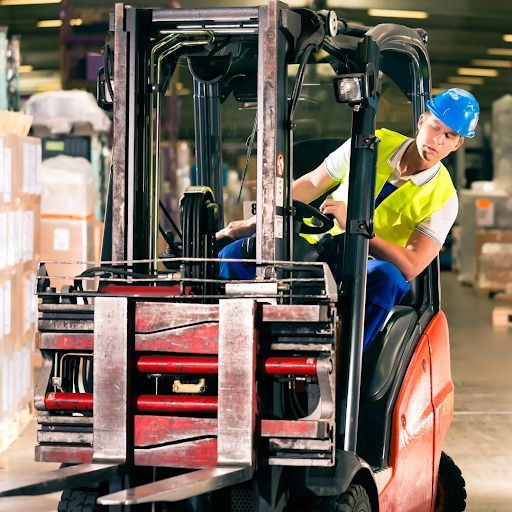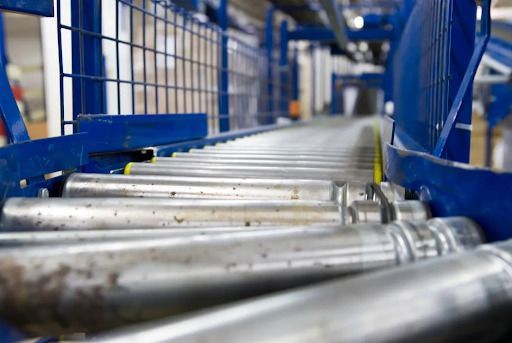Warehouse Safety: Common issues and how to avoid them
The warehouse workplace faces various challenges that might make it more vulnerable than other businesses. Several dangers are associated with shipping, ranging from dealing with heavy items to fast-moving equipment. Fortunately, almost all dangers can be avoided.
Fire Hazards
Although fires are avoidable, they may still be among the most lethal incidents in a warehouse. Hundreds of people may be placed in danger if a fire breaks out. Building rules for fire safety should be followed precisely in every detail.
Sprinkler systems and alarms must be periodically examined and tested. All the employees must be taught how to use fire extinguishers and where the company's emergency exits are.

It is crucial to eliminate all potential fire problems and ensure appropriate fire safety procedures are in place. When it comes to fire safety in the warehouse, chances are that you have installed all the appropriate alarms, fire extinguishers, and sprinklers.
If employees are not taught how to operate those properly, these devices will be worthless. Establish a frequent lesson and assessment timetable to ensure that all staff are familiar with fire safety protocols and that all necessary fire safety measures are in place and working properly.
Possible injuries: There is a considerable risk of fire to companies. Staff or visitors may suffer fatal or life-threatening injuries and damage or destroy buildings, equipment, or goods.

Forklifts
Equipment such as forklifts are essential to handling and distribution operations. Unfortunately, using it without proper care may significantly harm the user and other employees. OSHA's most often reported hazard in warehouse management is the improper usage of forklifts.
To solve this issue, ensure all workers are trained and have received the necessary certification. Conduct frequent update mentoring when an operator is found to be operating the vehicle dangerously.
Possible injuries: The weight of a loaded forklift puts it at risk of rolling, which could lead to accidents and injuries. According to OSHA, forklifts are available in different shapes and sizes, each with a unique risk set. It is more likely that a sit-down rider truck will be involved in a falling load accident than a motorized hand truck, for example, since the rider truck can increase a weight much higher than the hand truck. Various injuries can occur, including bruises, fractures, cuts, amputations, and many traumatic injuries.
Conveyors
Conveyor systems are often used when moving items from one place to another. They have the potential to expose employees to various hazards such as being trapped in machinery or being hit by falling objects such as packed cartons, heavy machines, and so forth.

To prevent such problems, you should provide enough protective gear to workers to prevent the trapping of clothes, body parts, and hair in the conveyor belt.
Possible injuries: Injuries such as arm and hand amputations, finger tears, burns, scratches, and fractured bones are among the most common injuries employees suffer when working with conveyors. Accidents can occur in the workplace despite the best efforts of workers to avoid them. It's easy for jewelry, hair, or loose clothes to get tangled in conveyor belts.
Storage of materials
Employees may be exposed to slip and travel risks because of improper load stacking and shelf storage. Therefore, loads should be equally distributed and properly positioned to minimize these problems; larger loads should be stored on the bottom or middle shelves. Removing one load at a time, as is the rule.
Possible injuries: If materials are not safely stored, they can end up falling on the staff working in the warehouse and cause fractures, bruises, and more severe injuries such as concussions or blindness.
Hazardous Chemicals
When dealing with hazardous goods in your warehouse, you should set up a risk communication protocol. Include in your risk communication program proper guidance on detecting chemical hazards, proper handling and storage of substances, and the use of appropriate personal protective equipment (PPE).
Possible injuries: Exposure to chemicals often treated in workplaces can lead to several short-term and long-term health problems, including skin rashes, poisoning, and conditions affecting the lungs, kidneys, and liver.
Charging Stations
Equipment that needs electricity can be refueled or recharged at charging stations in warehouses. Power for the units can be supplied by gasoline, liquefied petroleum gas (LPG), or a rechargeable battery. Such substances can cause fires and explosions if warehouse safety rules are not observed.
It is necessary to establish a sufficient ventilation system to remove hazardous gasses. PPE should still be worn. If staff is exposed to acids or chemicals, eye washing stations and shower facilities should be available.
Possible injuries: Potential dangers related to charging stations include but are not limited to: Batteries contain sulfuric acid, which is very corrosive. Hydrogen fumes released at the end of recharge are highly flammable, making them dangerous.
Tips and Best Practices
People working in a particular industry face unique threats that need specialized safety protocols to be followed. When working in a warehouse, following some basic safety guidelines is essential. If you want to keep your warehouse safe, here are a few standard guidelines:
Use Signage to Communicate Warehouse Safety Rules
Hanging signs in strategic areas should be at the top of your list of things to do and visible to all the employees.

- Flammable materials
- Dangerous chemicals
- Hard hat-only zones
- Fall risks
Ergonomics
Use proper ergonomics. Warehouse staff move many large items; therefore, appropriate lifting techniques must be taught to prevent injury and others. Efficient ergonomics in the warehouse should be a part of the warehouse safety plan.
OSHA Regulations (Occupational Safety and Health Administration)
There are no specific OSHA warehousing regulations; they have a general standard protocol that applies to warehouse operations:
Hazard Communication – the company should prepare and implement a written hazard communication plan, and employees who may be exposed to hazardous chemicals should know about them and how to protect themselves.
Emergency Action Plan (EAP)– If warehouse owners do not have an in–house fire brigade, then they should have a detailed plan describing the actions that warehousing staff should take in the event of a fire or other emergency situations.
Fire Safety – Warehouses should have a written fire prevention plan stored in the warehouse and made available to warehouse staff for review.
Exit Routes – Warehouses should have at least two well-designed emergency exit routes regularly inspected for maintenance, safeguards, and operational features.
Working Surfaces – Employees working at heights, especially on elevated platforms, should have fall protection systems to protect themselves from falls, which are among the leading causes of serious work-related injuries and deaths.
Medical and First Aid – Every warehouse should have a medical and first-aid kit to assist in potential incidents such as racking falls due to unsafe use of forklifts, among others.
According to OSHA, the most common injuries are
musculoskeletal disorders (mainly from overexertion in lifting and lowering) and being hit by powered industrial trucks and other materials handling equipment.
Maintaining good posture when lifting and using lifting devices should also be emphasized to personnel. If physical lifting is necessary, make sure they are taught safe ways to avoid harm to their backs and knees.
Sharp tools
Perforated steel, plastic strapping, and plastic pallet wraps are often used by staff to load and unpack products. As a result, suitable protective gear must be worn and a safety knife carried to prevent significant harm or death. No sharpening is required for safety knives, and they can be retracted automatically. All employees must be taught appropriate cutting practices to maintain warehouse safety.
Employees' safety
When an accident occurs and a warehouse worker is hurt, direct costs, such as medical care, reach an average cost of $38,000. Side costs equal $150,000 on average per accident victim. If an OSHA investigation finds that an employer repeated a previously cited crime, the fine could rise to $70,000.
Warehouse logistics operations can be dangerous and bring a lot of unwanted expenses. However, if companies follow the proper safety measures and provide staff training in safety, they will not only provide better working conditions for all employees but can drastically reduce incidents and help increase warehouse efficiency.
Want to know more about the most common types of warehouses and how they operate?





